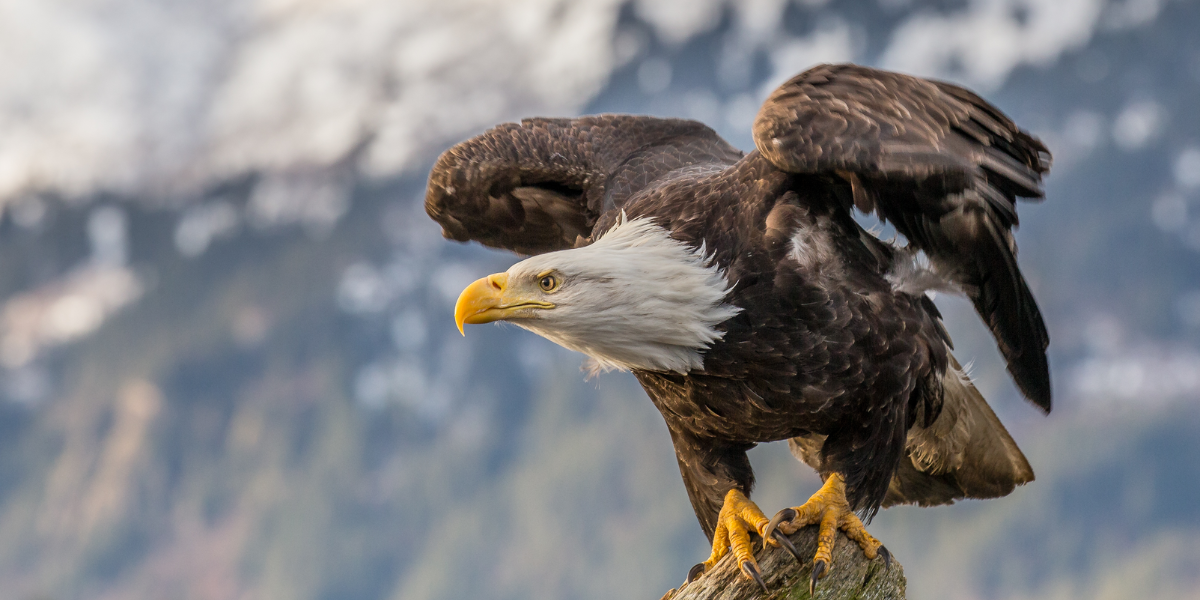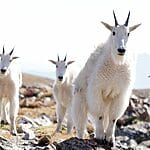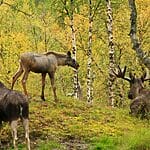9 Interesting Animals in Rocky Mountain National Park – You May Not Know About
There are 67 native species of mammals in Rocky Mountain National Park. This park covers around 265,461 acres, where many interesting animals in Rocky Mountain national park in Colorado.

Wild animals are wild creatures that can be unpredictable and dangerous. Visitors are advised to avoid the Fall River entrance and use the Beaver Meadows entrance via U.S. Hwy. Rocky Mountain National Park, roughly 4 miles from the Beaver Meadows Entrance.
You can see interesting animals in meadows or high in the tundra of rocky mountain national park. There are numerous pull-outs on both sides of Trail Ridge Road and in other areas of the park. Trail Ridge Road is one of the most iconic routes in Rocky Mountain National Park and is a must-see for wildlife lovers. These national parks are not zoos or museums but places of refuge for many interesting animals.

Rocky Mountain National Park (RMNP) and Estes Park have interesting animals like moose, bears, elk, bighorn sheep, bobcats, mountain lions, deer, coyotes, marmots, and pikas.

One of the most interesting animals in rocky mountain national park is Moose. These mosses feed on grasses and aquatic plants throughout Rocky Mountain National Park, so you can often find them near rivers, lakes, and wetlands.
Encountering Interesting Animals in Rocky Mountain National Park
A huge crow of people visits to explore wild and interesting animals in rocky mountain national park. So, keeping at least 75 feet or two bus lengths away from all wildlife in the park is recommended. Moreover, we recommend at least 120 feet or three bus lengths away from the most dangerous wild animals like black bears, moose, and mountain lions.

In this park, an elk herd numbering 600 to 800 in the winter, about 350 bighorn sheep, countless insects, numerous mule deer, and a small moose population are present.
The warmer temperatures of spring and summer bring many mountain animals down to lower elevations for grazing. They typically remain for the long summer season before moving back to higher ground. Spring is the birthing season, so seeing elk, moose, or mule deer with their calves is not unusual. Be sure to keep a safe distance and follow park regulations to avoid disturbing wild animals.

Rocky Mountain National Park is Home to 9 Known Species of Bats. When visiting Rocky Mountain National Park, remember that hoary bats are sensitive to human disturbance. Visitors are asked to refrain from feeding animals as feeding wild animals as it messes up their natural diets and behaviors.

Moraine Park

Moraine Park is located in the eastern corner of Rocky Mountain National Park. It is one of the most reliable places to spot the antlered wildlife. As the temperatures drop, elk migrate back to lower elevations. In this park, they stay during the fall rutting or mating season.
The Alberta Falls Trail

The Alberta Falls Trail is a popular destination for wildlife enthusiasts. This gorgeous trail boasts stunning views of the lush forest, alpine meadows, and icy streams.
9 Interesting Animals in Rocky Mountain National Park
While exploring Rocky Mountain National Park, maintain the distance and enjoy the opportunity to witness a top predator in its natural environment. It’s no surprise that wildlife watching is rated the number-one activity by a vast majority of Rocky’s three million annual visitors.
Pika

Pikas are small mammals related to the rabbit family, even though they look more like hamsters. The Pika (Ochotona princeps) is a remarkable small mammal that serves as an indicator species for gauging the potential impacts of climate change within Rocky Mountain National Park.
Their diet includes grasses, sedges, lichen, and conifer twigs. Predators such as coyotes, martens, weasels, and hawks threaten their survival. Their populations are vulnerable due to habitat loss and climate change. The IUCN counted the Pika as a “Least Concern” animal.
Mountain lion

Scientific Name: Puma concolor
Common Elevation: 6,000-12,000 feet
Spotting Tip: Mountain lions are elusive
They are primarily active during dawn, dusk, and night hours. Another interesting fact about Mountain lions is they are solitary animals with large territories. These large territories can range from 30 to 125 square miles.
Mountain lions, also known as cougars or pumas, are one of the most interesting and secretive predators in Rocky Mountain National Park.
Tourists often spot Mountain lions in the willow thickets along Highway 34 in the Kawuneeche Valley. Mountain lions are solitary animals, particularly males. They follow their food sources and migrate along with elk and moose herds.
Mule Deer

Mule deer (Odocoileus hemionus) are notable inhabitants of the American West, characterized by their distinctive large ears resembling a mule. These deer are renowned for their unique appearance, including a black forehead or mask that stands out against a light gray face.
During summer, they exhibit a tannish-brown hue, while their color shifts to brownish-gray in the winter. They are named for their oversized ears that resemble a mule’s ears. These deers are common and one of the interesting deers in Rocky Mountain. You can spot them anywhere with other interesting animals in Rocky Mountain national park.
Bighorn Sheep

Bighorn sheep are among the most elusive animals in Rocky Mountain National Park. Learn more about their habits and hangout spots and how you can explore these interesting animals without disturbing them.
Bighorn sheep rams sit together on Rocky’s alpine tundra. During the winter months, bighorn sheep are attracted to warm, south-facing slopes throughout the park. Bighorn sheep love to consume sprouting grass and shrubs in the spring, which makes them more visible if you’re traveling along Trail Ridge Road.
These sheep are commonly seen at Sheep Lakes from May through mid-August. They are most often sighted in and around Horseshoe Park, near the park’s western entrance.
Canada lynx

The Canada lynx (Lynx canadensis) is a mid-sized carnivore inhabiting North America’s boreal forests. It has a silvery gray fur coat, resembling the size and appearance of bobcats. The lynx’s unique features include large feet, long hind legs, black ear tufts, and a short black-tipped tail.
The Canada lynx is marked as a “Threatened Species” on the IUCN red list. These cats are native to Canada and Alaska and were released in Colorado to increase their numbers.
Bobcats

Bobcats are medium-sized wildcats that inhabit various Rocky Mountain National Park ecosystems, from montane forests to subalpine meadows. They have a distinctive appearance with their tufted ears, short tails, and spotted fur, providing excellent camouflage in their natural environment.
These wild cats are highly adaptable and skilled hunters, preying on animals such as rabbits, rodents, birds, and occasionally larger prey like deer. These elusive predators are most active when they stalk and ambush their prey during dawn and dusk.
Moose

Moose feed on grasses and aquatic plants throughout Rocky Mountain National Park, so you can often find them near rivers, lakes, and wetlands. You’re likely to find a moose trudging through willow thickets near the Kawuneeche Valley on the park’s eastern side.
Moose can also be found throughout the lowlands of RMNP, and, on occasion, you might even find a moose moseying through Estes Park.
On the IUCN red list, these mooses are marked as “Least Concern” animals.
Mountain Goats

Mountain goats are one of the interesting animals in Rocky mountain national park. Mountain goats are not true goats but are more closely related to antelopes.
With their thick, shaggy white fur and impressive agility, they are perfectly adapted to the harsh conditions and steep terrain found at high elevations.
Adult mountain goats can weigh between 100 and 300 pounds, with males sporting distinct, curved horns. These incredible climbers have specially adapted hooves with a rubber-like traction pad that allows them to easily navigate the steep, rocky cliffs. Mountain goats primarily graze on grasses and sedges.
During the mating season, male mountain goats compete to establish dominance and access to females. This competition often displays strength, such as clashing their horns together.
Bald Eagles

The bald eagle is the national bird and symbol of the United States. Its majestic appearance and association with freedom have made it a powerful emblem in American culture.
Adult bald eagles can have a wingspan of up to 7 feet (2.1 meters) and weigh around 8 to 14 pounds (3.6 to 6.3 kilograms). Females are usually larger than males.
While fish make up a significant part of their diet, bald eagles are opportunistic predators. They also feed on small mammals, waterfowl, and carrion (dead animals). They have even been observed stealing food from other birds. These large eagles are one of the most interesting animals in rocky mountain national park.
Frequently Asked Questions
What are some animals you can see at the Rocky Mountain National Park?
American black bears, moose, elk, mountain lions, bighorn sheep, gray wolves, golden eagles, and pikas, are some animals you can see at Rocky Mountain National Park.
Where are the most animals in Rocky Mountain National Park?
You can spot waterfowls such as ducks, beavers, and occasionally black bear near Lakes like Bear Lake, Dream Lake, and Sprague Lake,
How many species of animals are in Rocky Mountain National Park?
Rocky Mountain National Park has many animal species, including mammals, birds, fish, and reptiles.
Are there mountain lions in the Rocky Mountains?
Mountain lions, cougars, or pumas inhabit various elevations and ecosystems within the Rocky Mountain National Park.
- 12 Interesting Animals in Dominican Republic - 2024-05-02
- 8 Common Dangerous Animals in Yosemite - 2024-05-01
- 11 Interesting Animals in the Midwest - 2024-05-01









